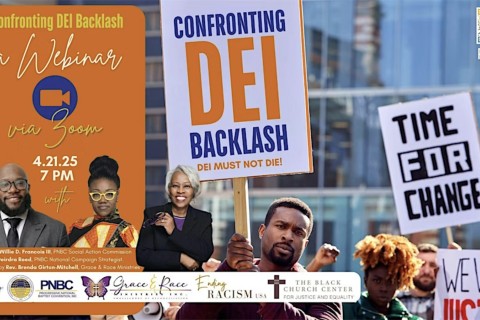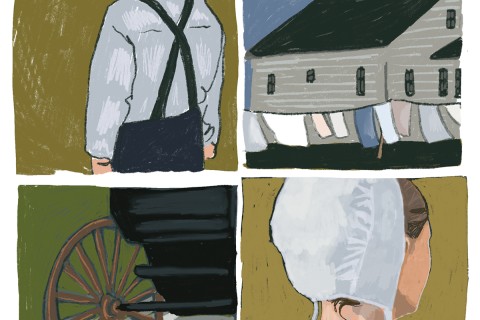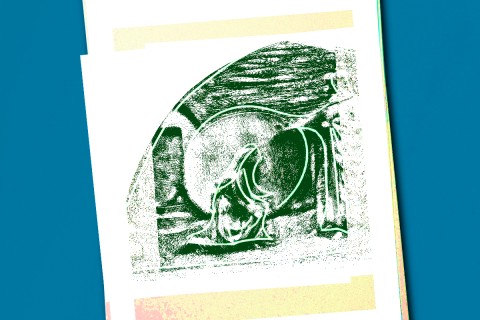Mormons and domestic change
Last week was a throwback to the 19th century when Mormon polygamy was the center of American news coverage. As part of a series of essays written to better explain the more difficult aspects of their history, and in response to the digital age posing significant problems for the retention of young adults, the Church of Jesus Christ of Latter-day Saints published a handful of documents on their complicated history of plural marriage. Catching the significance of these developments, these essays have in turn been covered by a host of national media sources. Everyone loves a story of sexual scandal, especially when it relates to a religious institution and hints at scholarly censorship.
Details concerning Mormon polygamy are shocking not only because of how foreign they seem to today’s acceptable sexual mores, but also because of how foreign they seem to the LDS Church’s contemporary image. After officially renouncing plural unions at the turn of the twentieth century, Mormons were swift and convincing in their adoption of conservative American cultural values in a move that was, in part, an earnest attempt to assimilate with a national society from whom they were previously scorned. Indeed, they were so successful in embracing mid-20th century domestic values that much of American Mormon culture remains reminiscent of Leave it to Beaver while the rest of the nation has moved on to Modern Family.
Yet the contemporary images of both American and Mormon domestic life mask the malleable and robust traditions from whence they both came. Indeed, Mormonism’s origins were very much rooted in a social movement that protested mainstream notions of the family itself. The decades that followed the inauguration of religious freedom witnessed an awakening of spiritual foment as democratic culture transformed religious and secular life. While much of this zeal resulted in the evangelical Protestant mainstream that dominated much of American culture for the following century, particularly innovated expressions of religious experimentation were formulated on society’s peripheries that embodied the period’s cultural revolution. Upset with what they believed to be stagnant and unfulfilling morals associated with the Victorian image of the home, a number of upstart sects cultivated new ways to instill religious reform into domestic life.
It was during this period that inventive movements proposed radical alternatives to their surrounding environment. Most implemented communalistic societies meant to counter the industrialization and urbanization they felt threatened America’s soul. But they also contested what was quickly becoming the most sacred space in Victorian America: the private bedroom. The Shakers, for instance, instituted a regimented code of celibacy and a strict separation of the sexes. John Humphrey Noyes proposed, in his Oneida Community, a scandalous form of open marriage and male continence that both governed procreation yet increased diversified sexual activity. And Joseph Smith, a decade after founding the Mormon Church, received a revelation that countenanced plural unions and inaugurated a dynastic structure of familial networks. These were disreputable practices even in their day, yet they embodied a deeper anxiety that was rampant in their era.
There was something about these movements that spoke to large segments of American people—hundreds in Noyes’s case, thousands in the Shakers’s case, and tens of thousands in Joseph Smith’s case. In a tumultuous period that witnessed remarkable social unrest, individuals did what seems unthinkable by fleeing the traditional domestic hearth. But it would be a mistake to classify their seemingly quixotic choices as exceptions to the American tradition, because in reality they were merely particular—if extreme—examples of a much more messy narrative that resembles more a whirlwind than a linear trajectory. Even today, conservative religious opposition to same-sex marriage, or even modern infatuation with Michelle and Jim Bob Duggar’s sexual practices, reveal the continued interdependency between religious belief, cultural exoticism, and bedroom exploits. All of this points to a domestic cultural tradition that is far from coherent or inevitable and a religious anxiety that is far more dynamic than staid.
Perhaps one of the reasons Mormonism’s polygamous past is so troubling is because it challenges our nation’s sacred (and mythic) tradition of unchanging domestic tranquility. In an age where the term “traditional marriage” still holds political capital, historic examples of sexual experimentation that were tethered to religious innovation invoke our anxiety over the separation of church and bedroom. Yet sex, spirituality, and society have always been interlinked in American history and continue to frame domestic policy and cultural discourse today. In an important way, then, the exotic can be so alarming precisely because it can appear so familiar.
Our weekly feature Then and Now harnesses the expertise of American religious historians who care about the cities of God and the cities of humans. It's edited by Edward J. Blum and Kate Bowler.





